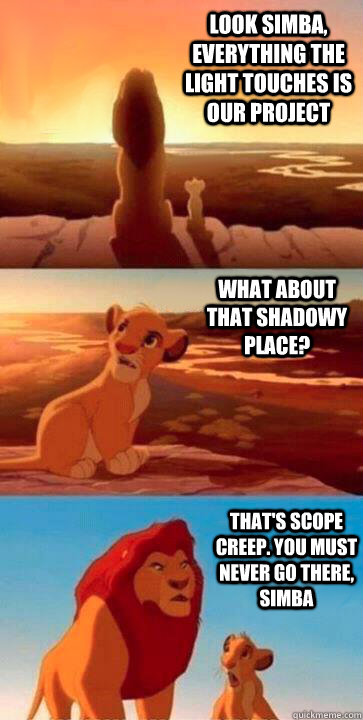Graphic designers and videographers, how often have you heard the following:
It would be really great if...
Could you just make this tiny edit?
Do you mind adding this one thing?
Tiny little edits from your clients, adding up over the length of a project, causing an increase in:
your personal time/effort
your impatience
stress and anxiety
Clients make these requests and expect the project budget to stay the same and sometimes still expect the project to be completed at the pre-determined deadline.
This my friends, is called scope creep.
First lets take a moment to understand scope.
"Scope is like a cracker jack box"
- Sherie Smith
"Think of project scope as a box of Cracker Jack where the prize at the bottom of the box is the goals and objectives of the project. When you open the box (start a project) the box is full and you know the ingredients and you can see the prize but you can't reach it until you eat your way to the bottom. Well, if someone comes along with more cracker jacks (more stuff for your project to accomplish), it will fill up your Cracker Jack box and make it even harder for you to get to your prize. Pretty soon your box will bulge, become worn and flimsy and eventually fall apart, losing the prize." - Sherie Smith
The scope holds everything that you are required to do on this project in order to create the final product. As Sherie said, if someone adds more stuff to your scope it becomes harder to finish the project, resulting in scope creep.
How do we prevent this from happening?
Below are some tips to help avoid this from ever happening again:
Help them understand what the final product will look like. Get the client to do as much "homework" as they can in advance. Let them understand what their business objectives are, figure out themes/colours/feelings, ask for a vision board or samples of other work that they are inspired by for this project.
Sit down with the client and explain the project back to them so that you completely understand the deliverables and their expectations.
Explain how they can be effective in regards to sending you edits.
Make it clear to your client that it costs a pretty penny to add more edits.
Build the potential for scope creep into your contract, for example, instead of the usual 3 edits, add a 4th edit.
Scope creep might happen part-way through your project, so here are some tips for navigating this:
Ask them to check in with their entire team, put their heads together, and compile a list of edits all at once. Or depending on your project, sit with them in the same room and make edits alongside them.
Listen to the client's request and remind them that it costs $$$ to make their request, and confirm with them if that is what they want
For those of you who feel uncomfortable having a conversation about the contract and avoid the tough conversations, then good luck burning yourself out. If you can't do it, get an assistant or a project manager to set those boundaries for you.
*Note: Freshbooks has an article outlining a few scripts you can use to help with scope creep
You know how you work best, so keep you boundaries up, work inside of the box, and don't jeapordize your mental health.
If you are interested in learning more about scope creep:
Final note:
When I work for an organization and offer help outside of my job description and give them more than what they asked for in my initial contract - in the project management world this is called gold plating. I am early in my PM career and also want to offer my best work with organizations I love. So I will go out of my way to help the organization succeed - it helps me feel accountable to my team (this is probably internalized capitalism at work, but I ain't mad).



